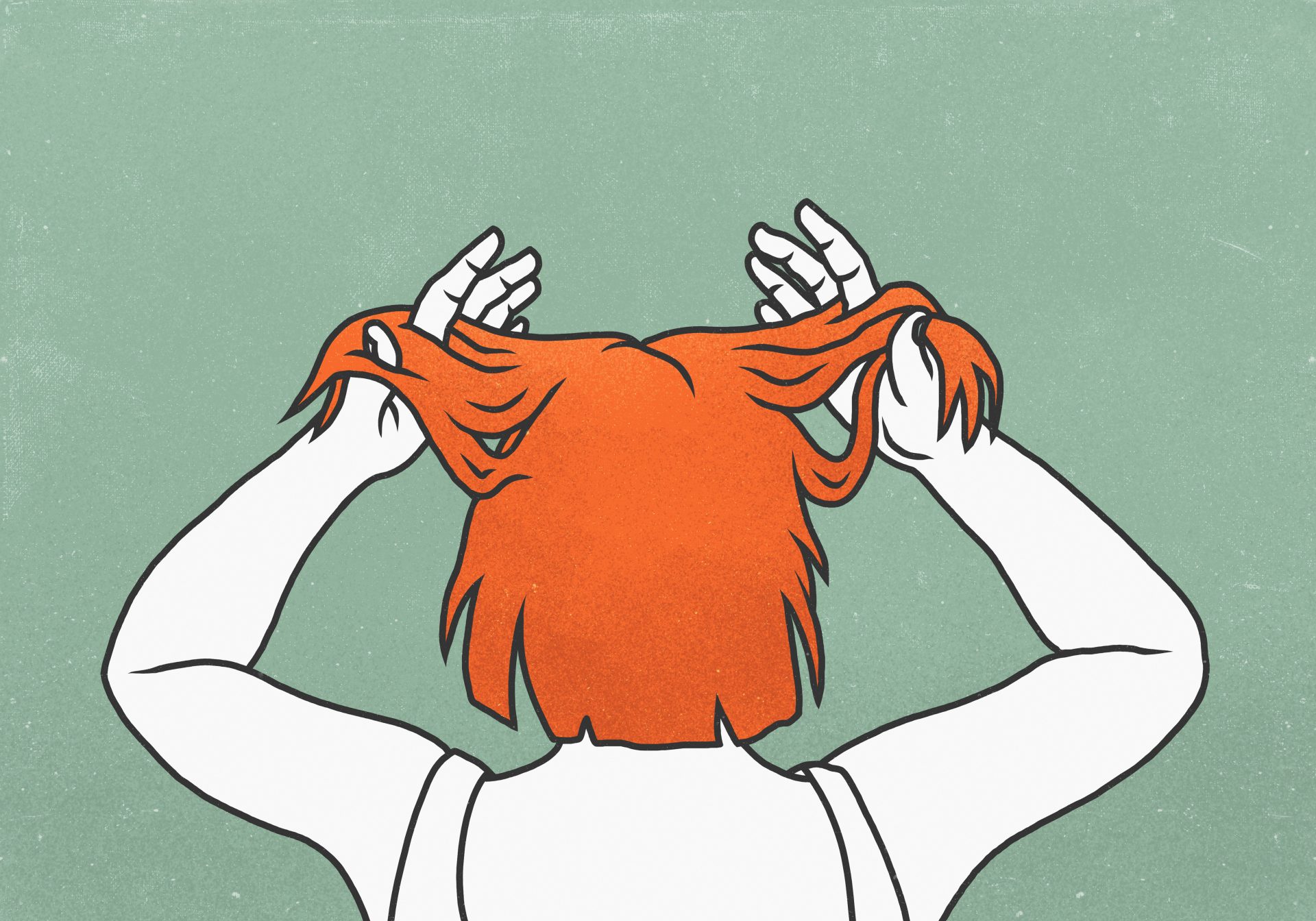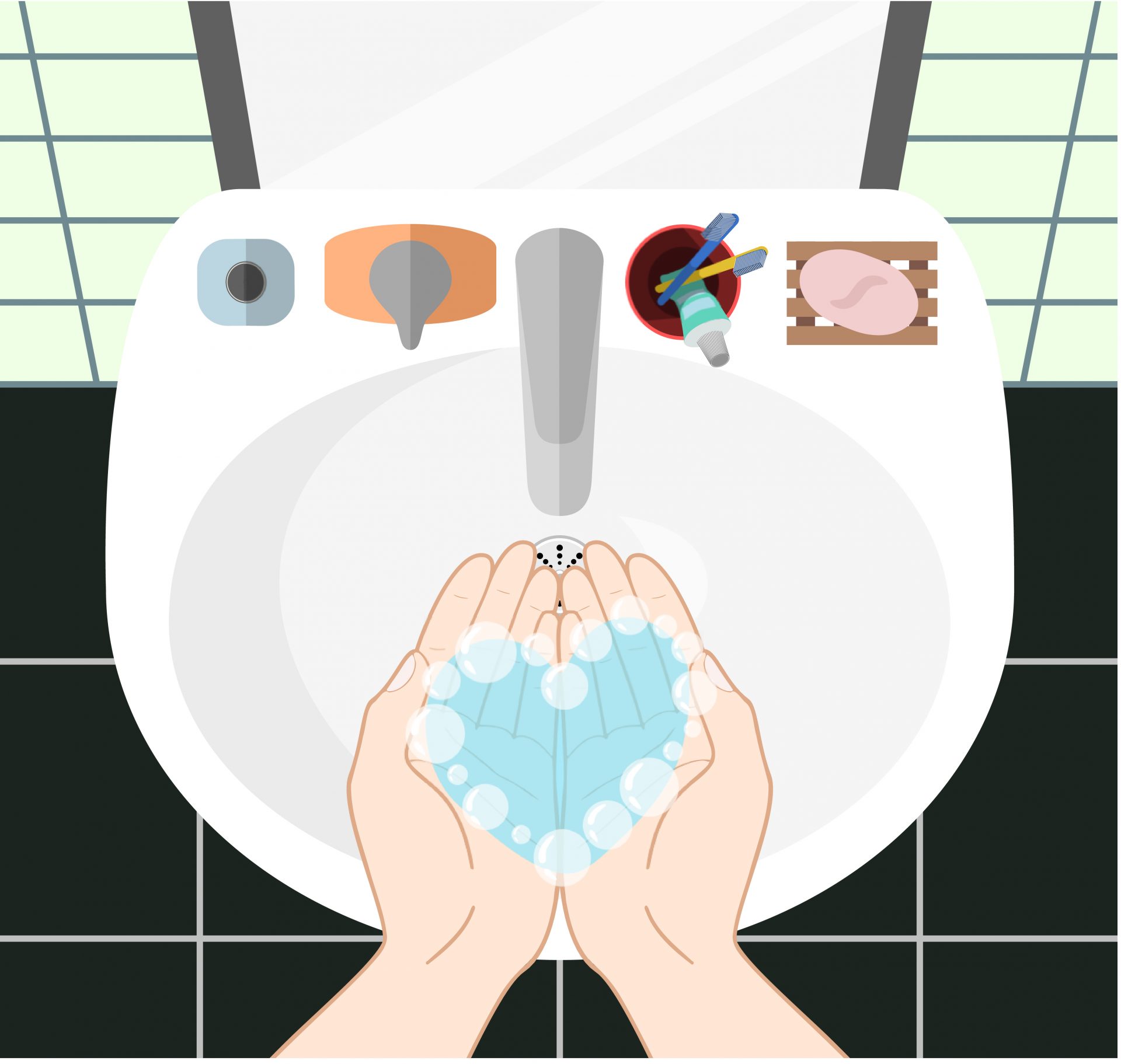Why you need to start treating your mind like a sink

Written by Kayleigh Dray
Kayleigh Dray is Stylist’s digital editor-at-large. Her specialist topics include comic books, films, TV and feminism. On a weekend, you can usually find her drinking copious amounts of tea and playing boardgames with her friends.
Look this way if you’ve recently found yourself feeling more stressed or anxious than usual…
I like to think of myself as a cool-headed (albeit warm-hearted) person. Recently, though, I’ve found myself feeling low-level frazzled on a near-constant basis.
This, in turn, means that I now seem to go from 0-100mph in terms of stress levels in no time flat.
One moment, I’ll be sipping tea and calmly leafing through a notebook. The next, I’m panicking over a looming deadline, catastrophising like there’s no tomorrow, and bursting into tears over spilt milk. Sometimes literally.
It’s been getting me down, all this wilting like a lettuce without a moment’s notice. Because it doesn’t feel like me. Not the me I strive to be, anyway.

When I mention that I’ve been feeling incredibly highly-strung of late to my mum, she doesn’t sound all that surprised.
“Imagine you have a very deep sink, and every time something causes you to feel anxious or stressed, a beaker of water is poured in,” she says, describing an analogy she saw being shared on social media.
“As the stressors build up, the sink starts to get very full – and it takes time for all that stress to drain away. It doesn’t disappear instantly. And if you start filling it before it’s had time to drain, you’ll be back at your limit before it’s too late.”
My mum’s words strike a chord with me, and I decide to give her analogy a google. Nothing comes up, so I adapt the search terms, and voila! While mental health experts don’t talk about a “stress sink”, they do talk about a “stress bucket.”
“We all experience stress to some degree,” reads a helpful post on Mental Health UK. “Some stress can be good, it can push us to work hard. But too much stress can make us feel overwhelmed, and prolonged stress can eventually lead to problems.”
The post continues: “The stress bucket is a way to visualise this. Above the bucket are clouds – the things that cause you stress. These rain into the bucket and gradually fill it up.
“You release the stress by doing things you enjoy or that help you to stress less.”
In an accompanying worksheet, the charity urges people to consider the size and shape of their stress buckets, the signs that it’s getting too full, whether or not they turn to unhealthy ways to release stress, and, if they do, what this looks like.
Perhaps most importantly, though, it asks us to consider whether or not our taps are working (which might be why my mum got hooked on the whole ‘stress is a sink’ thing) – and whether or not we are giving our stress buckets the time they need to drain empty before setting to filling them up again.
Presumably, my stress bucket looks like a sink (because I can’t get that image out of my head). And the background noise of the pandemic is the near-constant cloud that’s raining into it, although I, like many others, haven’t realised it until now.
“It’s totally understandable that we are all collectively feeling overwhelmed at the moment especially with so much uncertainty and things changing week by week regarding the pandemic,” psychotherapist Ruairi Stewart (aka The Happy Whole Coach) tells me.
“All this mounting stress and uncertainty can cause a person to forget that taking care of themselves should be a priority. But it is even more crucial that you make time for self-care right now, because stress wears a body down. It depletes you of your energy, it makes you less present and it impacts the overall quality of your life.”
Stewart continues: “With so much going on around you it is vitally important you make time for you. This could be as simple as getting out into nature for 15 minutes, listening to a podcast, lighting some candles at home, exercising, meditating, stretching, cooking something in your comfort zone, or even sticking something on TV you enjoy.”
In a bid to give me the tools I need to help manage my own stress sink, Stewart advises “setting boundaries with yourself around the amount of social media you consume, especially if this makes you more sanxious, how often you watch the news, and how much time you spend replying to work related emails.”

However, he cautions that I “need to be intentional and consistent for this strategy to be effective.”
“Boundaries aren’t just for others,” he says. “We need to apply some to ourselves as well so we are intentional with our time and energy. So explore why making time for self-care might be challenging for you, because you need to push past this block and prioritise taking care of yourself for the sake of your overall wellbeing.”
Thinking about myself in these terms has proven helpful. I’ve learned that making time for myself – be it something as small as a screen break, or a breakfast and a walk before work – is vital to having a good day.
More importantly, though, I’ve learned not to be too hard on myself if I do wind up feeling more frazzled than I’d like. Because that added pressure is a surefire route to an overflowing sink.
And, quite frankly, I’d much prefer to take a deep, stabilising breath, and give my worries the time they need to drain away.
If working from home is taking its toll on your mental health, you’re not alone. From the isolation of being separated from colleagues to the stress of trying to communicate with one another over Zoom, there is a myriad of reasons why you might find this time particularly challenging.
So, what can we do about it? We’ve got a plan.
Our new Work It Out campaign, supported by Mind, aims to give you the tools and resources you need to take care of your mental health while you’re stuck at home. From completing your Work 5 A Day to dealing with issues including anxiety, loneliness, and stress, we’ll be exploring all aspects of WFH wellbeing.
For more information, including how to complete your Work 5 A Day, you can check out our guide to getting started.
Images: Getty
Source: Read Full Article